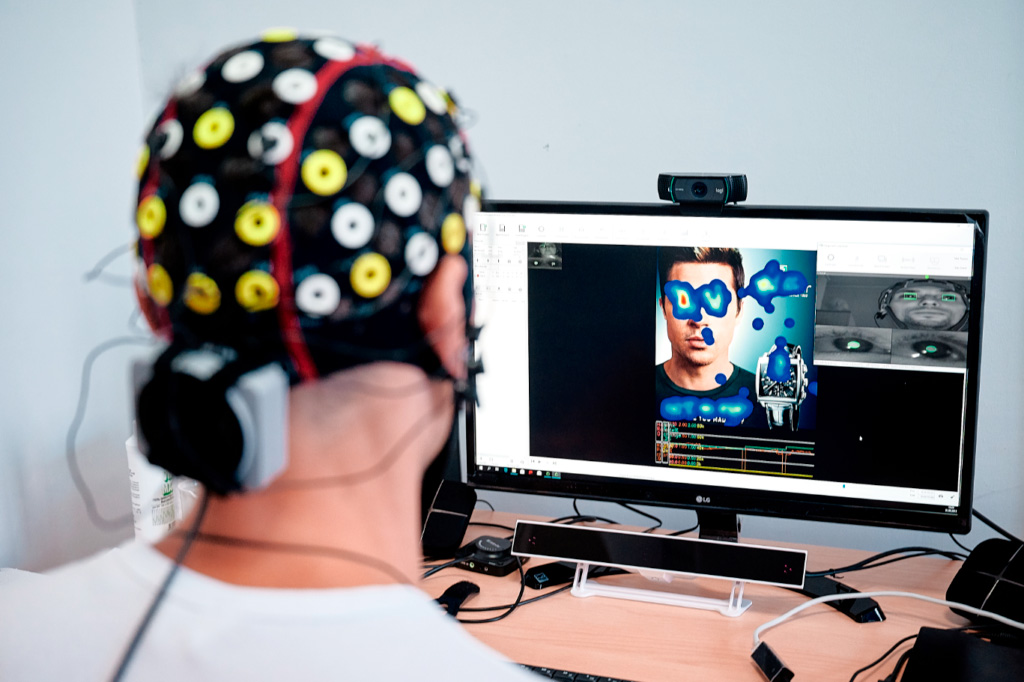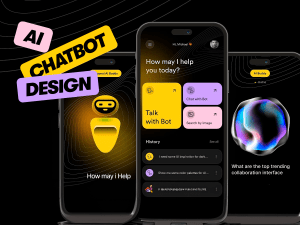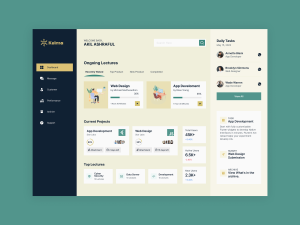Introduction
In today’s digital era, where user attention spans are diminishing, creating an exceptional user experience (UX) has become paramount to succeed in any industry. This is where Neuromarketing Research comes into play. Businesses are now turning to this field that combines neuroscience and marketing to understand user behavior at a deeper level. By leveraging neuromarketing techniques, businesses can gain valuable insights into users’ subconscious reactions, emotions, and preferences, ultimately improving the overall user experience.
Understanding Subconscious Reactions and Emotions
Neuromarketing allows us to tap into the unconscious mind of users, providing insight into their hidden motivations and emotional responses. Traditional user experience research typically relies on self-reported data, such as surveys and focus groups, which can be influenced by conscious biases. In contrast, neuromarketing techniques, including EEG (electroencephalography), eye tracking, and facial expression analysis, provide objective data on users’ cognitive processes and emotional engagement. By understanding users’ subconscious reactions, businesses can tailor their UX design to evoke positive emotions and enhance engagement.
Use Cases of Neuromarketing in Product Design
With the rise of digital technology, neuromarketing has become a powerful tool in shaping the design of web and mobile applications. By understanding how the brain processes information and makes decisions, designers can create user-friendly, engaging, and persuasive digital experiences. Here are some examples of how neuromarketing is applied during product design.

- Clear and Simple Information Hierarchy: Neuromarketing research reveals that the brain prefers clear and simple information presentation. This translates into intuitive navigation, concise text, and visual hierarchies that guide users through the content. Designers make use of larger font sizes, bold or contrasting colors, and strategic placement to emphasize important information and call-to-action buttons. By creating a clear information hierarchy, designers can reduce cognitive load on users and improve their overall experience.
- Visual Cues for User Guidance: Visual cues are vital in digital product design. Eye-tracking studies have shown that users tend to follow specific visual patterns when browsing web pages or mobile apps. By incorporating visual cues such as arrows or highlighted areas, designers can direct users’ attention to key elements or desired actions. For example, a “Sign up” button can be highlighted with a bright color or positioned prominently to encourage user engagement.
- Persuasive Design Techniques: Neuromarketing principles are often used to incorporate persuasive design elements into web and mobile app interfaces. By tapping into cognitive biases and decision-making processes, designers can influence user behavior and drive specific actions. One popular technique is the use of social proof, where designers integrate testimonials, ratings, or user reviews to enhance credibility and persuade potential customers. Positive reviews or recommendations from others can trigger a sense of trust, increasing the likelihood of user engagement or conversion.
- Emotional Design and Micro Interactions: Emotions play a crucial role in user engagement and brand perception. Neuromarketing allows designers to create digital experiences that evoke positive emotional responses. Microinteractions, small design details that provide feedback or enhance user interactions, are one way to incorporate emotional design elements. For example, a mobile app can provide delightful sounds or animations when a user completes a task or achieves a goal, triggering positive emotions and creating a more engaging user experience.
- Personalization and Tailored Recommendations: By leveraging user data and neuromarketing techniques, designers can create personalized experiences for web and mobile app users. Personalization enhances user engagement and drives conversions by delivering relevant content, recommendations, or offers. For instance, an e-commerce app may use previous purchase history or browsing behavior to offer tailored product recommendations. By understanding the user’s preferences and desires, designers can create a more impactful and relevant experience, increasing the chances of conversion.
- Color Psychology in Branding and Packaging: Color plays a significant role in evoking emotions and influencing consumer behavior. Neuromarketing studies have shown that different colors can elicit specific emotional responses. By understanding this, product designers can strategically use color to enhance brand perception and create packaging that attracts consumers. For example, the use of red packaging by Coca-Cola is intended to evoke emotions of excitement and energy, as the color red has been found to increase heart rate and stimulate appetite.
- Eye-tracking Technology for User Interface Design: Eye-tracking technology provides valuable insights into how users interact with product interfaces. By tracking eye movements, designers can identify where users focus their attention, what elements attract their gaze, and how they navigate through the interface. This data is invaluable in optimizing user experience and creating user-friendly designs. By analyzing eye-tracking data, designers can determine the most effective placement of important information and call-to-action buttons, reducing cognitive load and making it easier for users to navigate the product interface.
Incorporating neuromarketing techniques into product design maximizes user satisfaction, drives conversions, and helps businesses succeed in a competitive digital landscape.
Benefits of Neuromarketing Research in User Research
- Objective Measurement of User Reactions: Neuromarketing techniques provide objective measurements of brain activity, emotions, and attention levels. This enables researchers to go beyond subjective self-reporting and obtain a more accurate assessment of users’ cognitive and emotional responses.
- Uncovering Emotional Engagement: Traditional UX research often relies on users’ verbal feedback, which may not adequately capture their emotional engagement. Neuromarketing research can identify emotional states, such as excitement, frustration, or delight, that users may not consciously express, enabling designers to tailor experiences to evoke desired emotions.
- Identifying Attention Patterns: Neuromarketing techniques, such as eye-tracking, can track users’ visual attention and gaze patterns. This information helps UX designers understand which elements of a design capture users’ attention and can optimize the visual hierarchy and layout accordingly.
- Predicting User Preferences and Behavior: Neuromarketing research can analyze neural patterns associated with positive experiences, which can be used to predict user preferences and behavior. This allows designers to create personalized and user-centric experiences that align with users’ underlying cognitive processes and subconscious desires.
Enhancing UX Research Methodologies with Neuromarketing
Integration of neuromarketing research into UX research methodologies can yield significant benefits. Here are a few ways to incorporate neuromarketing in UX research:
- Usability Testing with Neurophysiological Measures: In addition to traditional observation and user feedback, researchers can gather neurophysiological data to understand users’ cognitive load, emotional responses, and engagement levels during usability testing. By combining physiological data with qualitative feedback, designers gain a more comprehensive understanding of user experiences.
- A/B Testing with Neuromarketing Metrics: Neuromarketing techniques can enrich A/B testing methodologies by providing objective metrics for measuring user responses. For example, researchers can measure users’ attention or emotional engagement when comparing different design variations, informing decisions about which design features perform better.
- User Journey Mapping and Emotion Analysis: By analyzing users’ emotional responses at different stages of their journey with a product or service, UX researchers can identify pain points, moments of delight, and areas for improvement. This knowledge informs the design of emotionally engaging experiences that drive user satisfaction and loyalty.
- Neural Data for UX Strategy Development: Neuromarketing insights can shape UX strategy development by understanding the subconscious drivers of user behavior. This knowledge helps in tailoring user interfaces to evoke specific emotions and optimize the overall user experience.
Case Studies
In order to illustrate the practical application and effectiveness of neuromarketing in understanding subconscious reactions and emotions to improve user experience, we will examine two case studies. These case studies demonstrate how businesses have leveraged neuromarketing techniques to gain valuable insights into users’ subconscious behaviours and preferences, ultimately enhancing their user experiences.

Case Study 1: E-commerce Website Redesign
An e-commerce company that sells clothing and accessories wanted to optimize their website design to improve the overall user experience and increase conversions. They turned to neuromarketing techniques to understand the subconscious reactions and emotions of users and make informed design decisions.
Using eye tracking technology, the company conducted a study to understand how users interacted with their website. The study revealed that users were initially drawn to the upper-left corner of the webpage, confirming the “F-pattern” of visual attention. Armed with this knowledge, the company strategically placed key information and calls-to-action in these areas, ensuring that users’ attention was captured right away.
Furthermore, facial expression analysis was employed to gauge users’ emotional responses to different design elements. The study found that users responded more positively to images featuring models wearing the products, as it helped them visualize how the clothing would look in real life. Armed with this insight, the company incorporated more images of models wearing their products throughout the website, resulting in increased engagement and conversions.
By leveraging neuromarketing techniques, the e-commerce company successfully optimized their website design to align with users’ subconscious preferences. This led to a more intuitive and engaging browsing experience, ultimately increasing conversions and improving the overall user experience.
Case Study 2: Fitness Tracking Mobile Application Optimization
A mobile app development company wanted to improve the user experience of their fitness tracking app. They utilized neuromarketing techniques to understand users’ subconscious reactions and emotions, with the aim of enhancing engagement and satisfaction.
Through eye tracking studies, the company discovered that users were primarily focused on specific features, such as calorie tracking and workout summaries, while other features were being overlooked. This insight allowed the company to restructure the app’s navigation and prioritize the most frequently accessed features, resulting in a more intuitive and user-friendly app.
Additionally, neuroimaging techniques were employed to measure users’ brain activity when interacting with the app. The study revealed that certain color schemes and design elements triggered positive emotional responses in users. Armed with this information, the company redesigned the app’s visual interface to incorporate these elements, creating a more visually appealing and emotionally engaging user experience.
By utilizing neuromarketing techniques, the mobile app development company was able to optimize their app to align with users’ subconscious preferences. The result was an enhanced user experience that increased engagement and user satisfaction.
Future Trends and Opportunities
As neuromarketing continues to evolve, there are several future trends and opportunities that can further enhance the understanding of subconscious reactions and emotions to improve user experience.
- Virtual Reality (VR) and Augmented Reality (AR): Incorporating VR and AR technologies can provide more immersive and realistic experiences for users. Neuromarketing techniques can help understand users’ subconscious reactions to different VR and AR elements, enabling businesses to create more engaging and impactful experiences.
- Machine Learning and AI: By leveraging machine learning algorithms and AI technology, businesses can analyze large amounts of neuromarketing data to identify patterns and trends in users’ subconscious reactions and emotions. This can lead to more accurate and personalized user experiences.
- Personalized Content Delivery: Neuromarketing techniques can help businesses understand users’ subconscious preferences for different types of content. By personalizing content delivery based on these preferences, businesses can create more relevant and engaging experiences that cater to individual users’ needs.
- Emotional Targeting: Understanding users’ emotional responses to different marketing messages and communication strategies can allow businesses to tailor their campaigns to evoke specific emotions. This can lead to stronger emotional connections with users, enhancing the overall user experience.
Conclusion
Neuromarketing offers a unique perspective on user behaviour, enabling businesses to improve user experiences by understanding and leveraging users’ subconscious reactions, emotions, and preferences. By combining traditional UX research with neuromarketing techniques, businesses can create more intuitive, engaging, and personalized experiences that not only satisfy users but also enhance conversions and promote brand loyalty. As the digital landscape continues to evolve, embracing the power of neuromarketing is becoming essential for businesses aiming to excel in the ever-competitive realm of user experience.




